Issue #80, Volume #2


How To Track “The End Of America”
You’re Running Out Of Time To Escape The Dollar
This is Porter’s Daily Journal, a free e-letter from Porter & Co. that provides unfiltered insights on markets, the economy, and life to help readers become better investors. It includes weekday editions and two weekend editions… and is free to all subscribers.
| Central banks are moving away from the U.S. dollar… The U.S. dollar creates wealth by facilitating global trade… Trump’s tariffs are going to hurt that system… If the dollar fails, gold and Bitcoin will rise… We’re headed to a new version of 1929… Prime Day sales surge… |
The sovereign debt bubble will not grow forever.
Sooner or later, there will be a massive shift away from the U.S. dollar, which now serves as the foundation of the world’s financial system. This shift will lead to the collapse of the entire paper money system all around the world.
Today, countries use the U.S. dollar to settle trade accounts. Most large businesses keep their treasury in dollars. Around the world, most central banks keep their reserves in dollars. That’s one reason the demand for dollar-backed stablecoin is so large: everyone is willing to accept the risk of owning dollars.
This system has incredible benefits because it enables global trade, which enables the full expression of economics’ greatest miracle: comparative advantage – which essentially is a country or business’s ability to produce something at a lower cost than another country or business can.
But the entire system faces one massive risk: the U.S. currency has zero intrinsic value.
There is no “proof of work” that underlies the dollar. There is no quantifiable, intrinsic value for the U.S. dollar that is independent of the government.
When the U.S. Treasury defaults – and it will default, there is no way it’s going to repay $37 trillion – that won’t change the amount of work that’s required to mint a Bitcoin or an ounce of gold. But it will render the exchange value of the dollar virtually worthless.
Thus, this system only works because people, all around the world, trust us.
And they shouldn’t.
Controlling the world’s reserve currency, when that currency is merely a promise, is like maintaining the entire world economy’s “ledger” in pencil.
It’s dangerous because the temptation to tilt the scale is always there. And, since 1971, the U.S. government has been tilting the scale substantially. The U.S. has been adjusting the ledger a little bit in its favor each day by consistently printing dollars to pay for things the government couldn’t otherwise afford.
The U.S. could run an honest system, but, as I showed you last week with the Chapwood Index and the real rate of inflation, it doesn’t.
The U.S. government cheats its creditors (including Social Security recipients) by consistently printing money and inflating away powerful increases to productivity. The ongoing monetization of the government burden impoverishes its creditors. That’s everyone – including you – holding dollars or accepting dollars in compensation.
That’s why the real value of wages has fallen by 65% in less than a decade!
How can you avoid this burden? Don’t hold U.S. currency.
I created Porter’s Permanent Portfolio to give everyone a fool-proof, safe way to escape the ongoing devaluation of the dollar.
And you need to do this now. The collapse has begun. All around the world people are abandoning the dollar.
Over the last 10 years, central banks have been dumping U.S. Treasury bonds and buying gold in record amounts. Central banks began buying gold heavily in 2010, following the Federal Reserve’s bailout of the mortgage banking system. And buying vastly accelerated in 2015, following the Treasury’s moves to seize Russia’s dollars. From 2015 to 2024, net global central bank purchases totaled approximately 6,700 tonnes. That’s 17% of all the gold ever mined!
The largest purchasers were:
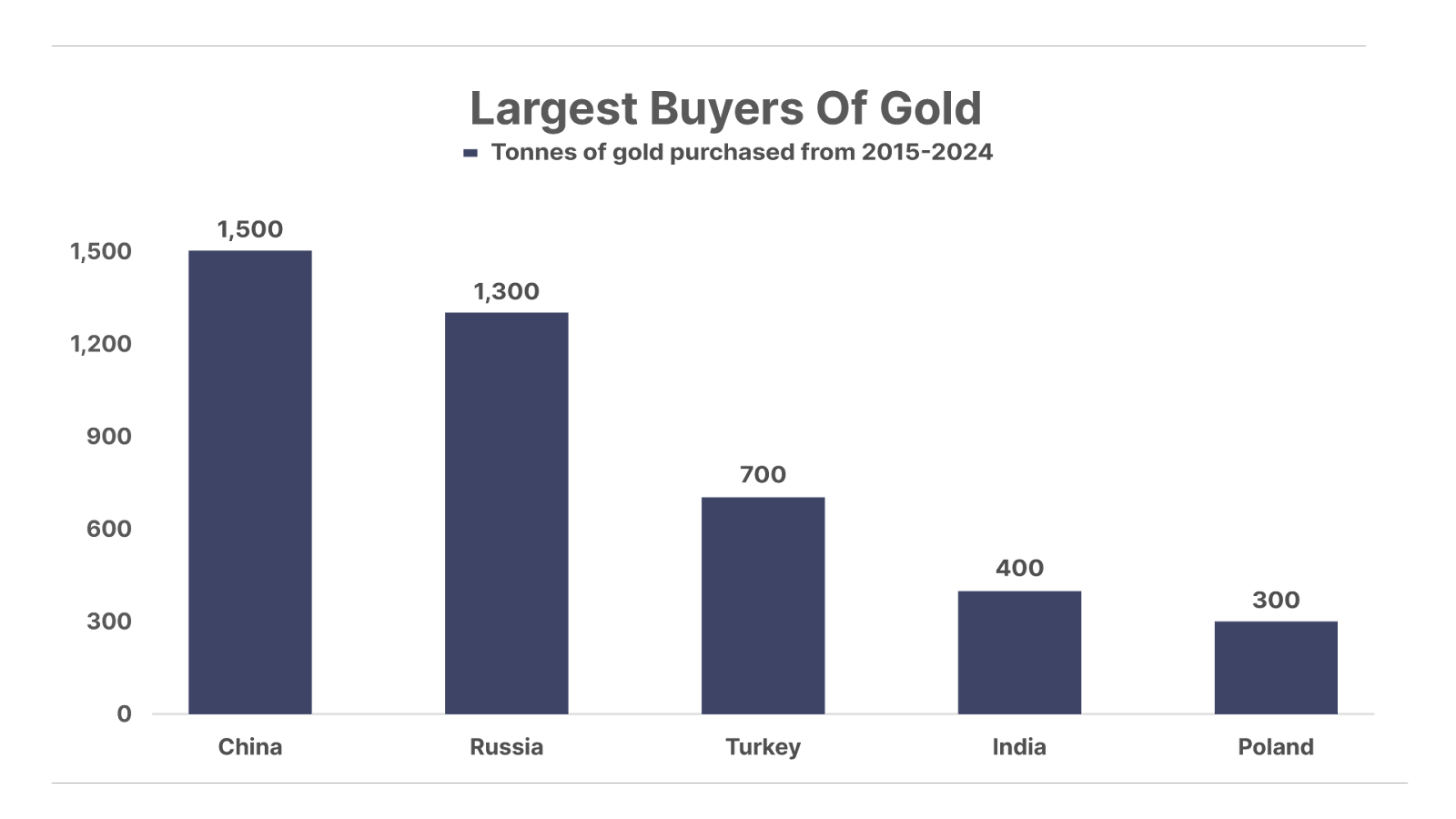
Sooner or later it’s going to occur to the Japanese and Europeans that the dollar system is failing. And when that happens, the race to get out of the dollar will dramatically accelerate. You’ll go to the bank one day and the whole system will have been shut down overnight. Anyone who thinks this won’t happen hasn’t read much history: it is inevitable.
And that’s what’s so dangerous about President Donald Trump’s tariffs.
You see, the world’s financial system exists to facilitate trade. The world has been willing to put up with a lot of inflation in the dollar as long as the U.S. maintained free and open markets around the world. There’s a lot of value created by the U.S. military for Saudi oil. And a lot of value created by the U.S. market for Japanese cars and electronics. And a lot of value created for Chinese manufacturers. And Vietnamese textiles, etc.
The U.S. dollar creates a lot of wealth by facilitating this trade – more than enough to cover some inflation. But today, all around the world, U.S. creditors are facing three new, very negative factors that drastically change that calculation:
- Trump is now going to tax their access to the U.S. market at a very high rate – that will eliminate a lot of trade and thus a lot of demand for the dollar
- Real inflation is running far ahead of U.S. Treasury bond yields and, with ever-growing deficits, a Treasury default has become inevitable – holding dollars is now potentially suicidal
- Trump has begun seizing dollars out of the system entirely (like with Russia) and threatening the same to countries that move toward a new system – this adds a new level of uncertainty to keeping assets in the U.S. dollar system
If the dollar fails, so will all the paper currencies that are built on top of it too. New systems will emerge using gold and Bitcoin.
This is inevitable. Investors, all around the world, are losing faith in the entire paper-money system. Why? Because they should: it is rotten to the core. And things that can’t go on forever, don’t. Likewise, things that should have never existed in the first place always collapse.
And that is what’s happening right now.
Look at the big increase to the price of gold.
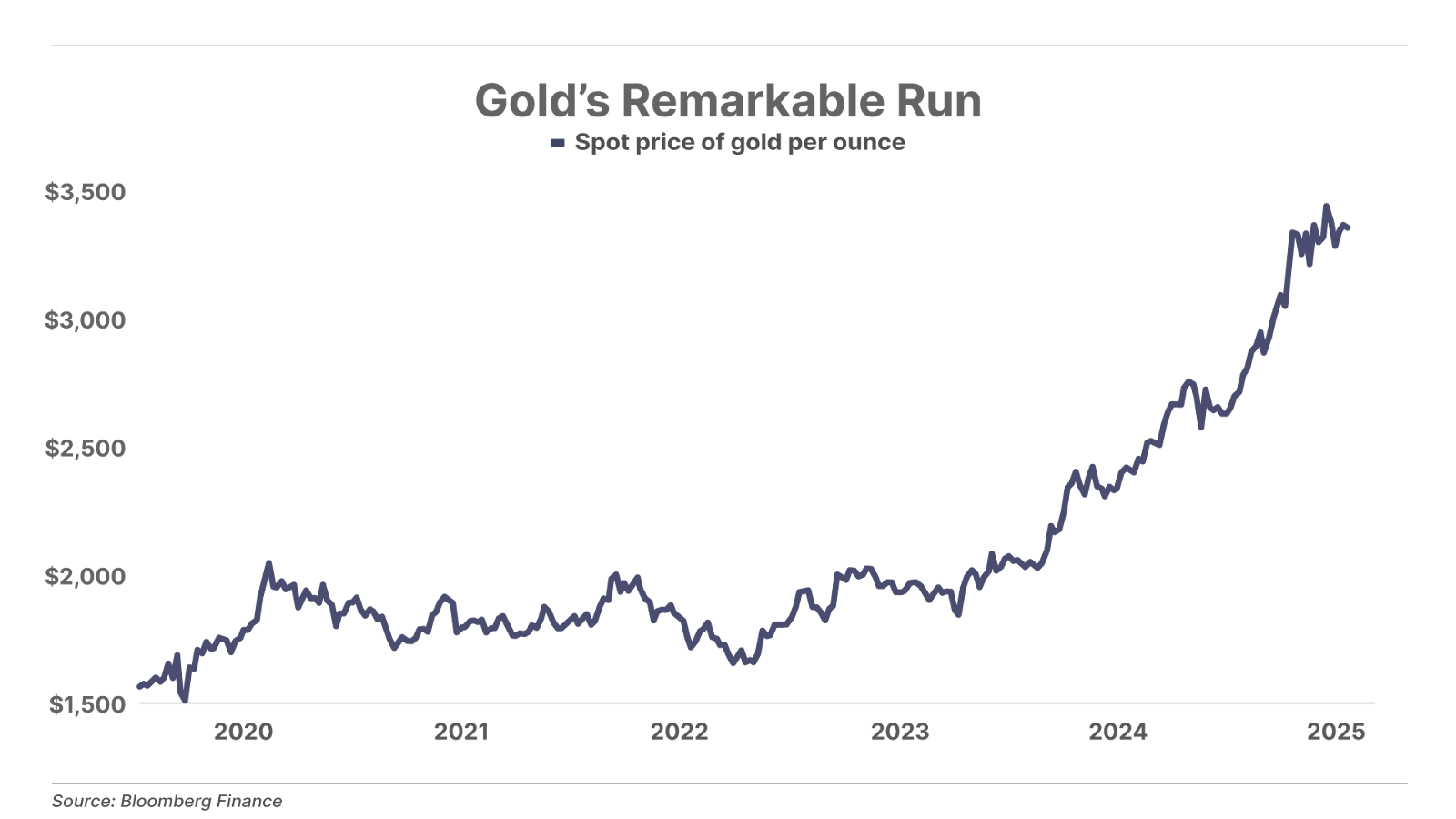
Look at the huge increase in the price of Bitcoin.
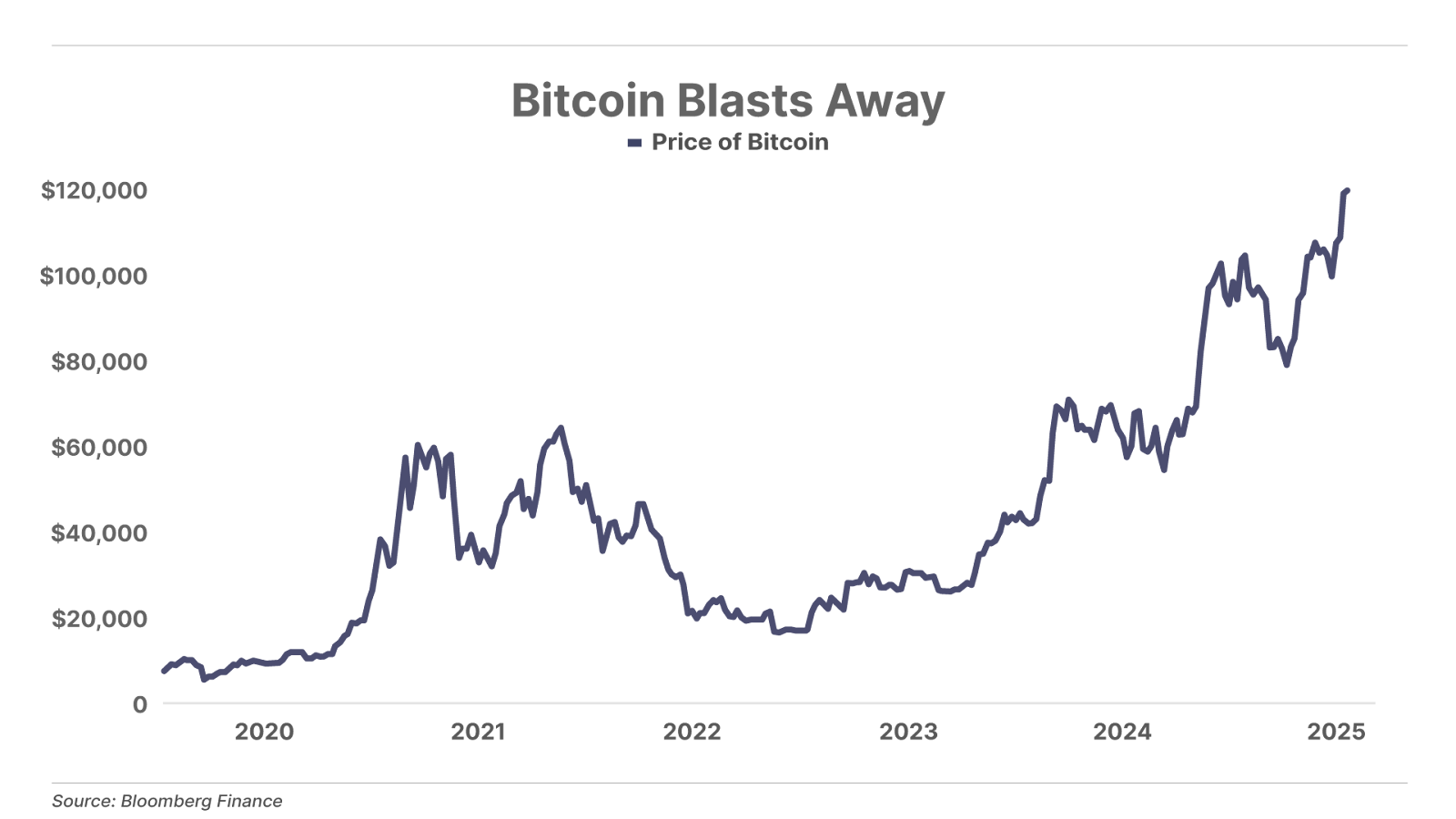
And look at the rising long-duration yields in both Japan and in the U.S.
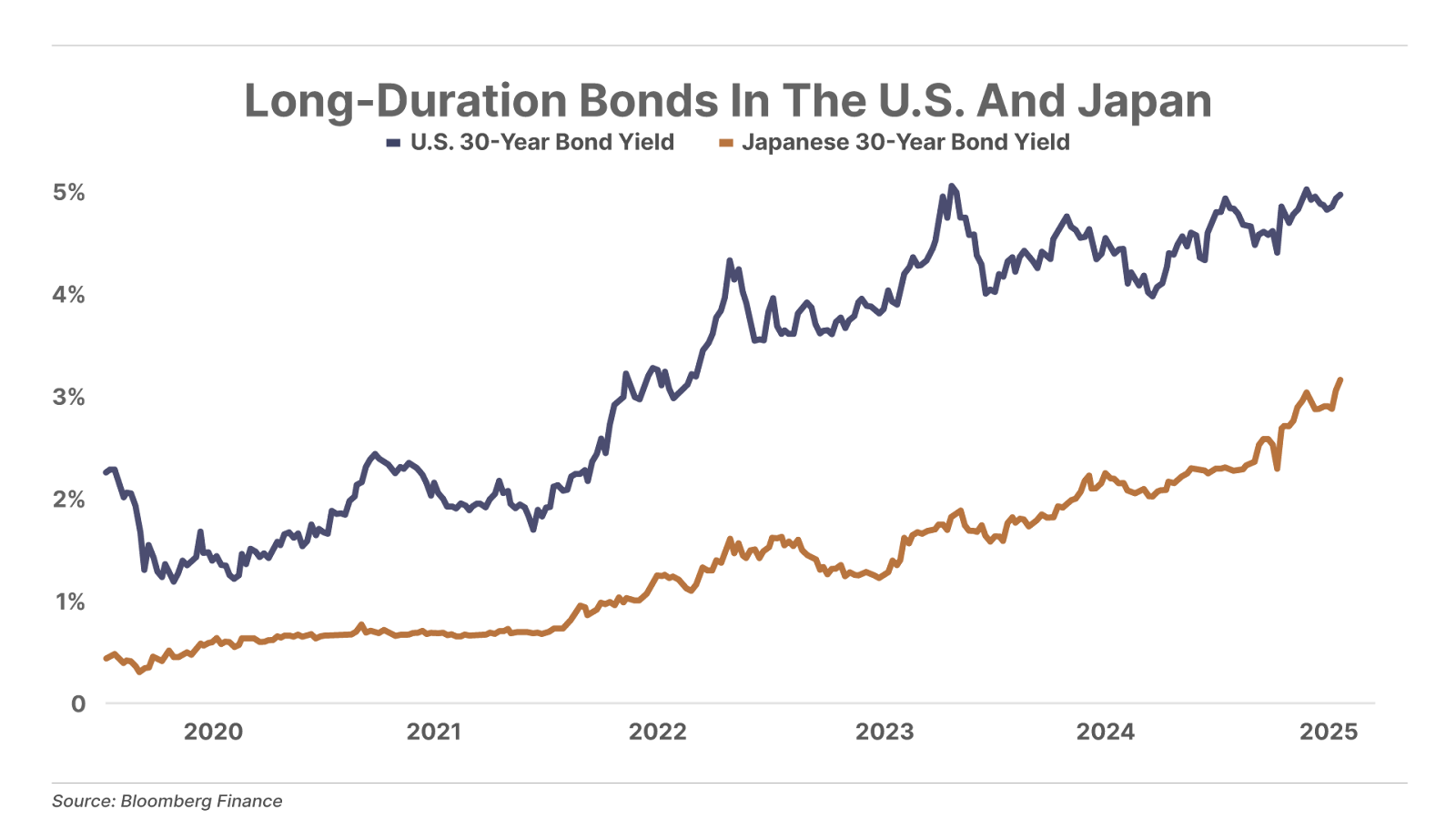
Why does Japan’s yield matter?
Japan is the largest foreign holder of U.S. Treasuries.
Japan has had negative real interest rates for decades, and that has encouraged Japanese companies and banks to borrow in low-cost yen and then invest in higher-yielding U.S. Treasuries or other assets. Warren Buffett did a version of this trade a few years ago, when he borrowed yen to invest in Japan’s businesses.
Just think about that for a minute. Why should the world’s wealthiest people be able to gain access to vast, virtually endless sums of money, virtually for free, and then use that money to buy real, valuable assets? That doesn’t make any sense.
As people are losing faith in this system, they are selling yen. That’s making the Japanese government offer higher interest rates on its bonds. The same thing is happening in Europe. As my friend Doug Casey likes to say, the dollar is a “I owe you nothing.” But the euro is a “who owes you nothing,” because it’s increasingly unlikely that that currency union will remain intact because of the inability to finance massive retirement benefits in countries with a declining population.
As you know, I don’t have a crystal ball. I can’t tell you if a panic will emerge tomorrow… or next Tuesday. But I know it’s coming.
And one of the best ways to track this collapse is watching the major currencies’ (dollar, yen, euro) long-duration bond yields. The more these governments are forced to pay to maintain their debt loads, the more they will have to print. That’s a doom-loop.
How to survive? Use Porter’s Permanent Portfolio to allow you to safely invest in Bitcoin… and in gold. It will position your savings in the world’s highest-quality assets too, businesses that have survived crises like this before.
The next few years are going to be devastating for most people all around the world. We’re heading toward a new version of 1929. How ironic it will be if, in the future, people ask about the Great Depression of ’29 and then have to ask, “which one – 1929 or 2029?”
I don’t know why the politicians always make the same mistakes – but they do.
Be prepared.
A Historic Gold Announcement Is About To Rock Wall Street
For months, sharp-eyed analysts have watched the quiet buildup behind the scenes. Now, in just days, the floodgates are set to open. The greatest investor of all time is about to validate what Garrett Goggin has been saying for months: Gold is entering a once-in-a-generation mania. Front-running Buffett has never been more urgent – and four tiny miners could be your ticket to 100X gains.
Be ready before the historic gold move. Click here to get Garrett’s Top Four picks now.
Three Things To Know Before We Go…
1. Amazon’s Prime Day sales surge despite a weak start. Amazon’s Prime Day delivered record-breaking results, with total spending across all retailers jumping 30% to $24.1 billion as the event expanded from two days to four. Although first-day sales declined by double digits compared to last year, overall sales picked up, making this Amazon’s most successful Prime Day ever. The surge wasn’t fueled by high-ticket items but by everyday essentials like dish soap and paper plates – nearly two-thirds of purchases were under $20, and the average household spend was just $156. The data reflects a consumer who is still spending, but cautiously.
2. Student loan delinquencies not just for the young. In May, the Department of Education (“DOE”) resumed collections on student loans, ending the five-year pause, in place since March 2020. During this pause period, delinquency rates soared among all age cohorts of 30 years old and above. The DOE reported in May that only 38% of the 43 million Americans with student loan debt are current on their loans. Now that the payment pause has lifted, the government can begin garnishing wages among these delinquent borrowers. With millions of consumers facing a potential default on this $1.6 trillion asset class, the economy could experience a meaningful hit to consumer spending.
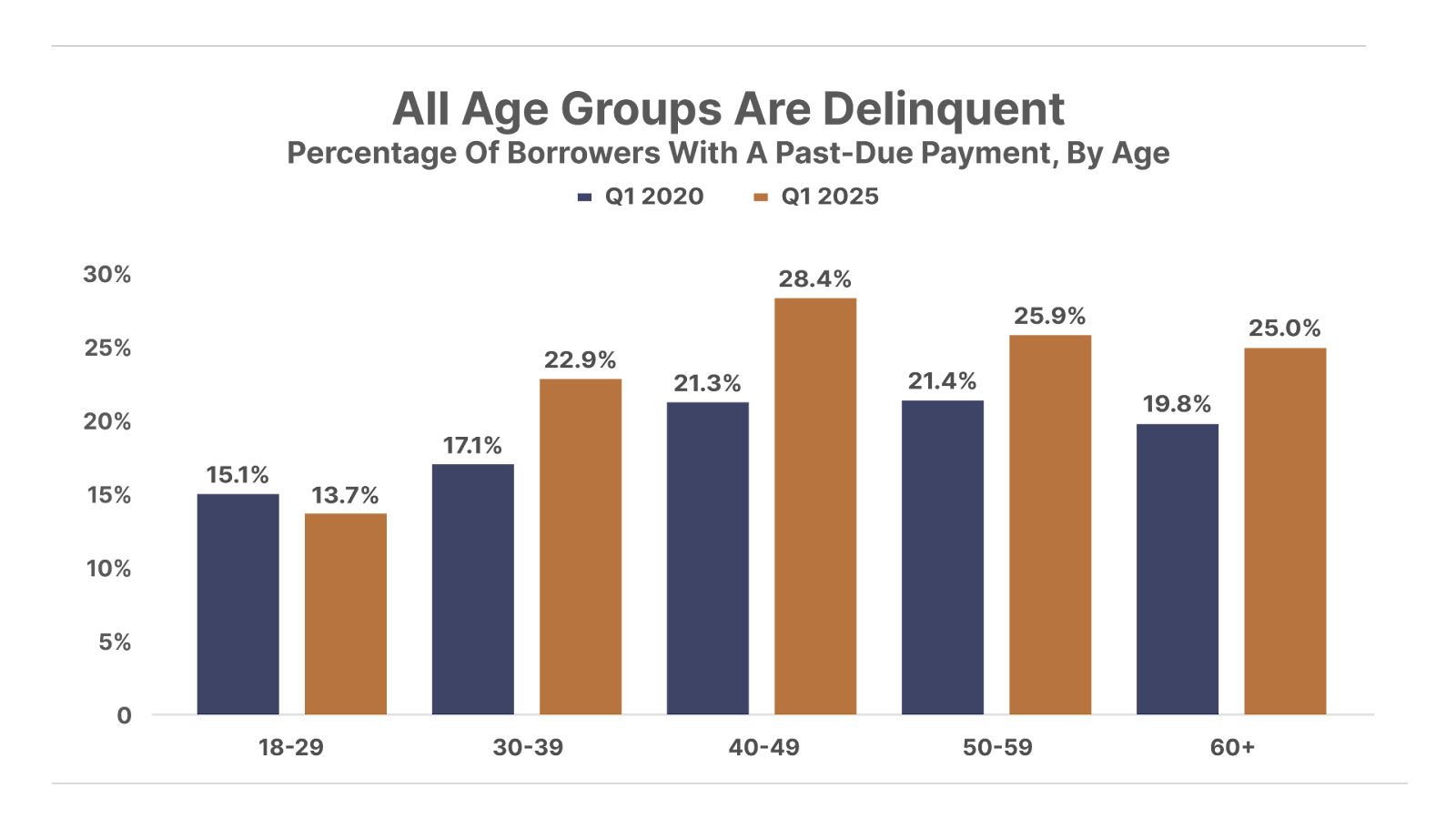
3. Speculators sit it out. Speculative traders have missed out on virtually all of the market’s gains over the past few months, according to the latest Commitments of Traders (“COT”) report from the Commodity Futures Trading Commission. The COT shows net positioning among speculative traders in the S&P 500 is virtually unchanged since the market’s April post-Liberation Day lows. This sets up the potential for a continued move higher in the major indexes as speculators eventually increase their positioning in stocks.
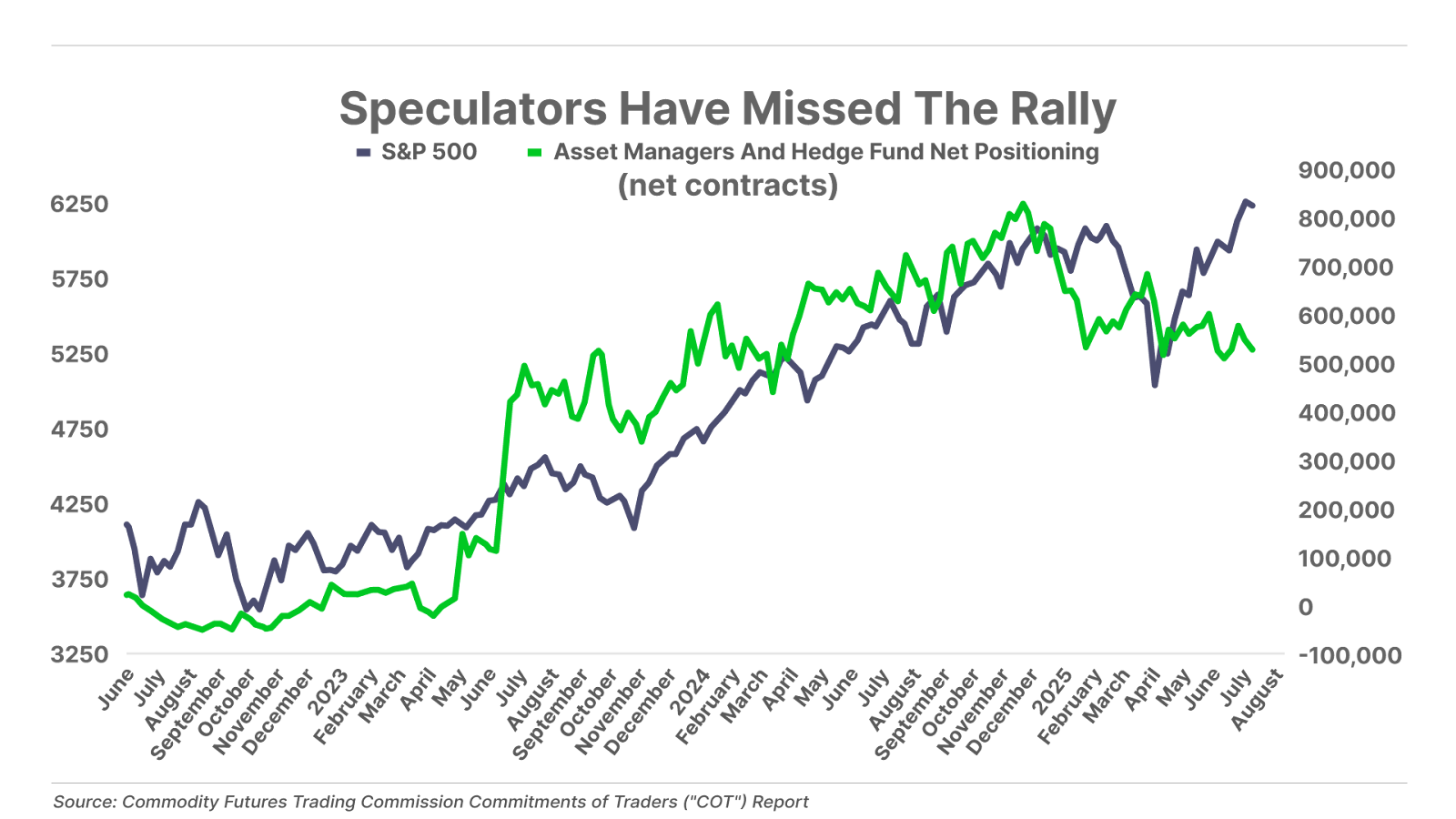
And One More Thing… Poll Results: A U.S. Civil War?
On Friday in the Daily Journal, Porter described a worsening situation with the U.S. – both economically and socially – suggesting a default is coming and a civil war of some sort is likely by the end of the decade. We asked readers: “Will there be a civil war in the U.S. or in a major U.S. city by 2030?”
Most survey takers – 63% – said yes, there will be a civil war by 2030 while 37% said no, there will not be a civil war by 2030.
Mailbag
Today’s “Mailbag” letter comes from John W., who writes:
Honest interested customer here.
If you are going to advertise with touts like “just one of 10 winning open trades in The Trading Club portfolio,” please let us know how many positions in total.
Since individual investors should hold 10 to 20 positions in total for best returns, if you are cherry picking 10 out of 40 recommendations, not really helpful.
The Burford story has been interesting. Great work finding that opportunity.
I’m sure they don’t come everyday but you find things of a similar ilk on an ongoing basis. (Lifetime alliance member *before* you left Stansberry).”
Porter’s response: Fair question. We currently have 15 open positions in the The Trading Club portfolio, following our most recent trade placed on Friday. As of the market close on Friday, 11 out of these 15 positions were in the green.
But more important than the number of winners or losers is the total return across the entire portfolio. And we’re very pleased with the performance so far, with our $100,000 starting portfolio up to $104,669 as of Friday’s close. That’s up 4.7% in the six weeks since we launched this portfolio on May 30 – on an annualized basis that’s a 49% gain.
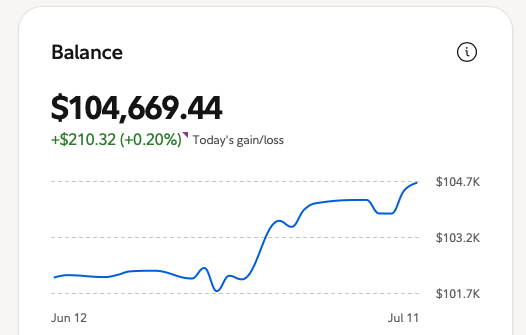
Our ambitious goal when launching this product was to grow this initial $100,000 into a $1 million portfolio over time. And show subscribers every move we make before we make it, with full transparency, by tracking every trade in a real-money account.
We’re just getting started, and if you want to join us on the journey, there’s plenty of time to get in.
We’ll soon open up The Trading Club in advance of our next series of trades to be published later this month.
Click here to join the wait list and get notified when we officially open up The Trading Club for new members.
Tell me what you think… good, bad, or indifferent: [email protected]
Good investing,
Porter Stansberry
Stevenson, Maryland
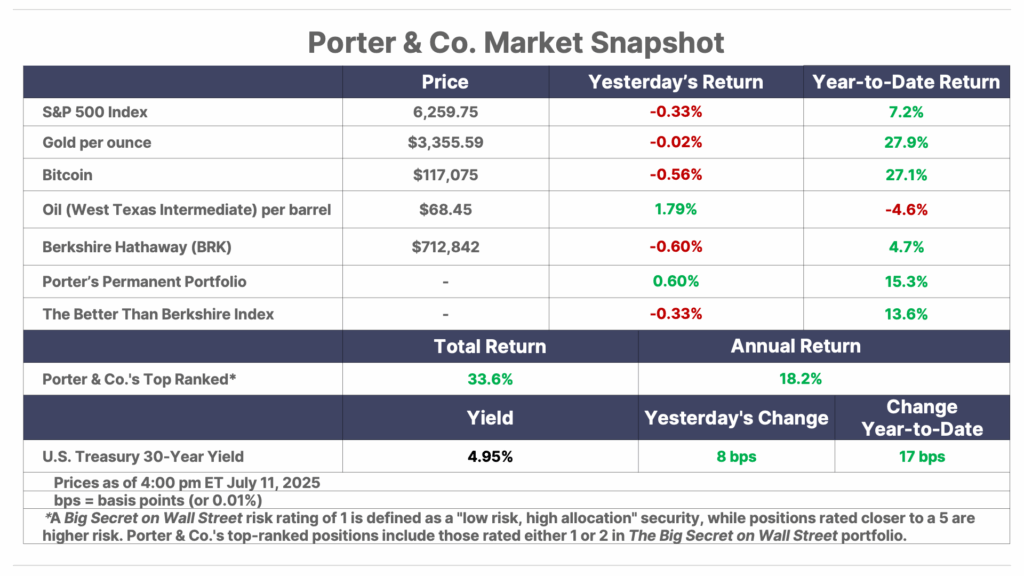
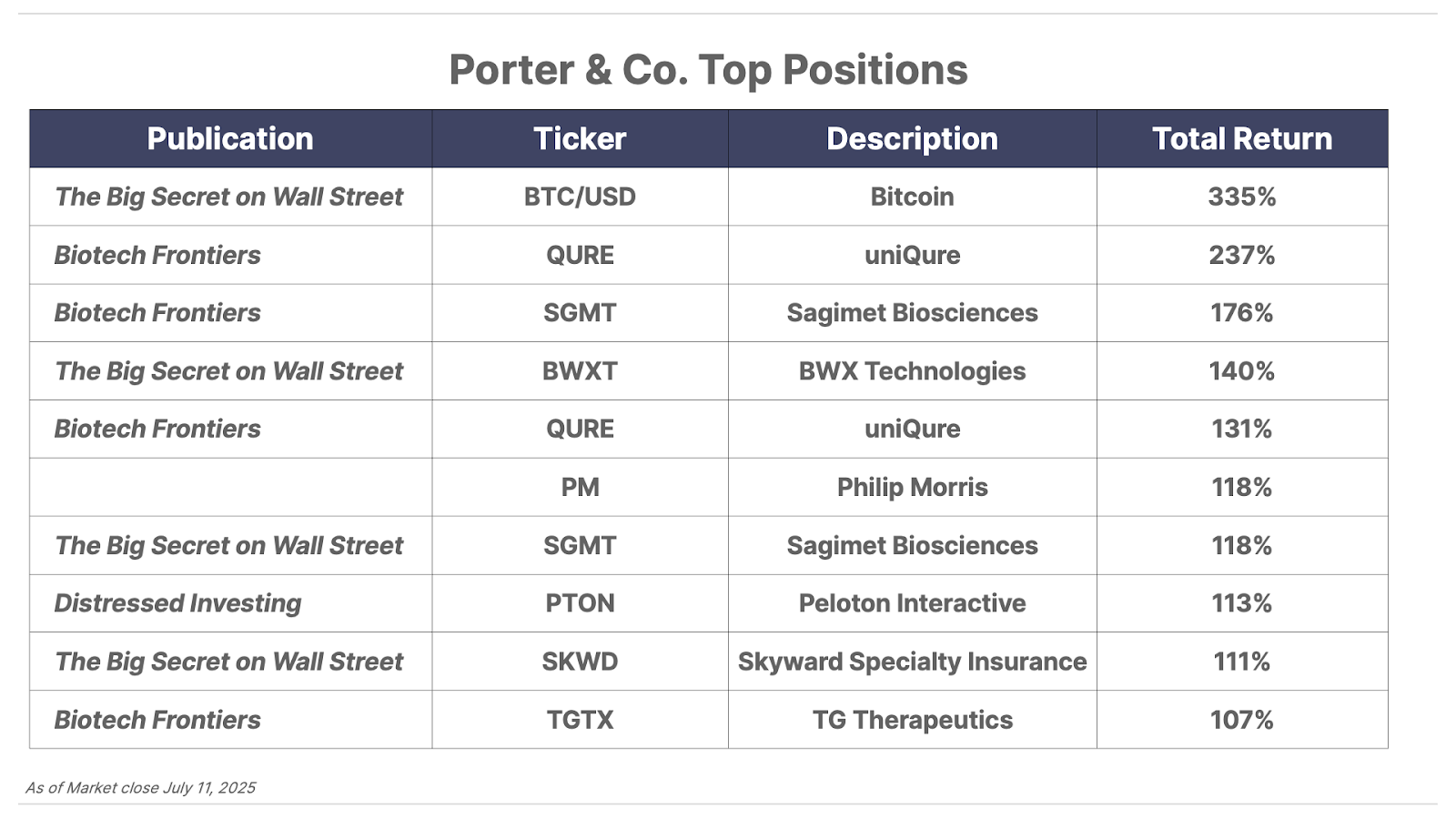
Please note: The investments in our “Porter & Co. Top Positions” should not be considered current recommendations. These positions are the best performers across our publications – and the securities listed may (or may not) be above the current buy-up-to price. To learn more, visit the current portfolio page of the relevant service, here. To gain access or to learn more about our current portfolios, call Lance James, our Director of Customer Care, at 888-610-8895 or internationally at +1 443-815-4447.
